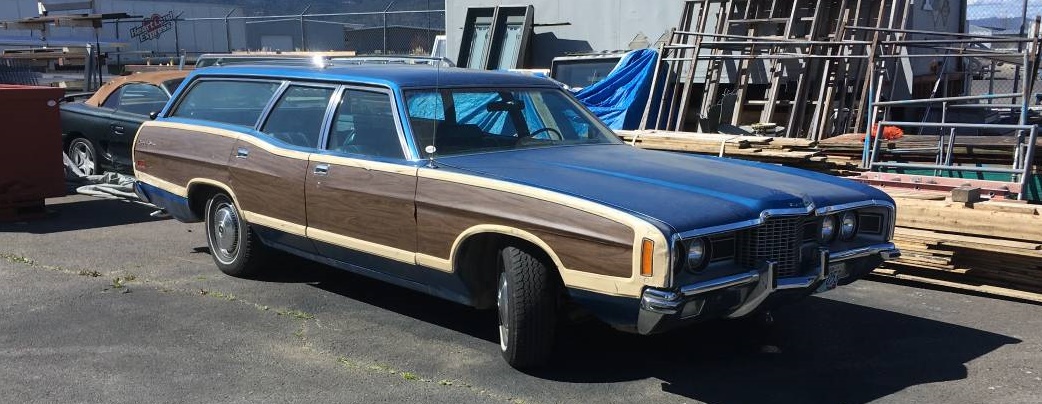
Today, most family haulers are silver silvermist or beige beigemist crossovers. But 45 plus years ago, things were different.
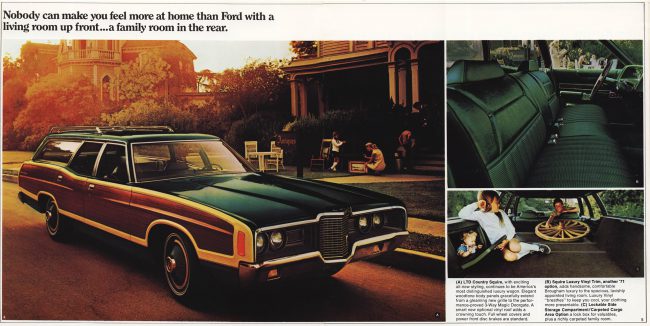
Yes, in 1971 Ford was Wagon King. Sure, GM sold tons of wagons too, but despite their being all new, not everyone was sure about GM’s new disappearing tailgate, where it retracted behind the rear bumper instead of folding down. Though GM still trounced FoMoCo in overall production.
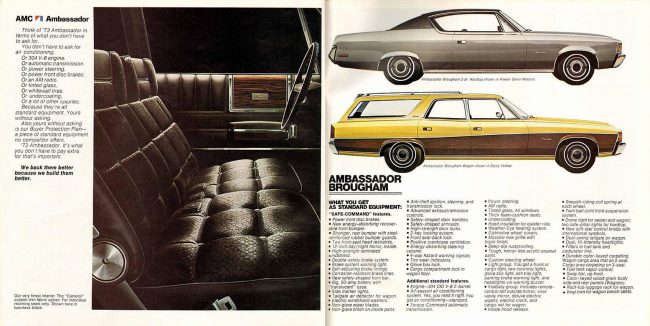
Chrysler Corporation and even plucky little AMC in Kenosha had a range of full size wagons as well, (the woody AMC Ambassador wagon in particular is a favorite of your author’s) but the lion’s share of longroofs in the ’70s were GM and Ford.
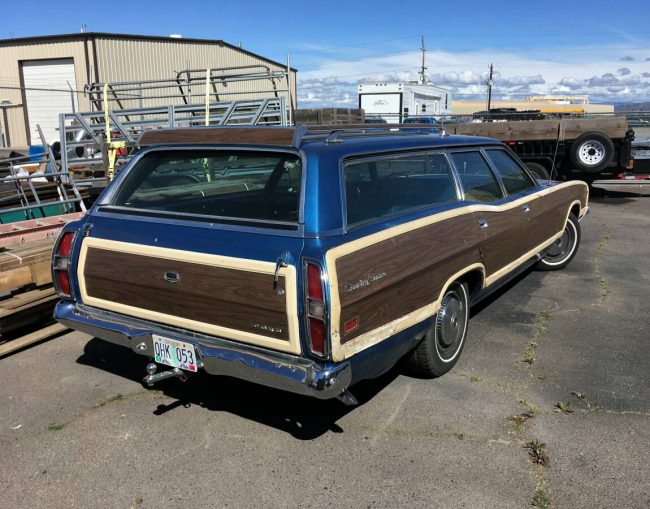
And Ford’s “Magic Doorgate,” which both opened from the side and folded down, was a hit.
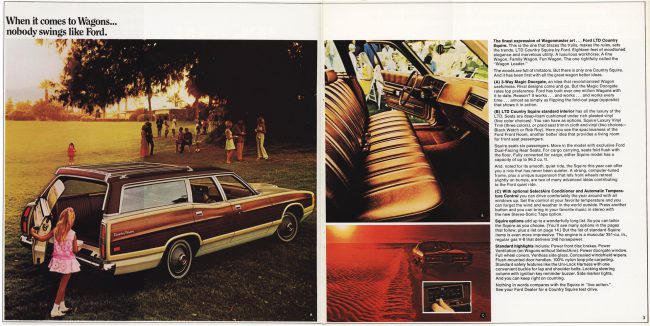
While all 1971 Fords were restyled and touted as all new, there was still a lot of 1969-70 Ford beneath the new nose and sheetmetal.
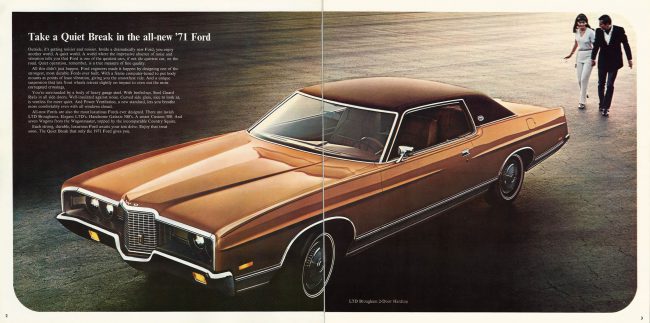
All rode a 121 inch wheelbase. The cheapest full-size Ford station wagon was the Custom Ranch Wagon, which weighed 4,222 pounds, had a price of $3,890 and sold 16,696 copies. But of course it was the Plain Jane version, with minimal chrome, minimal trim and taxicab-style interior.
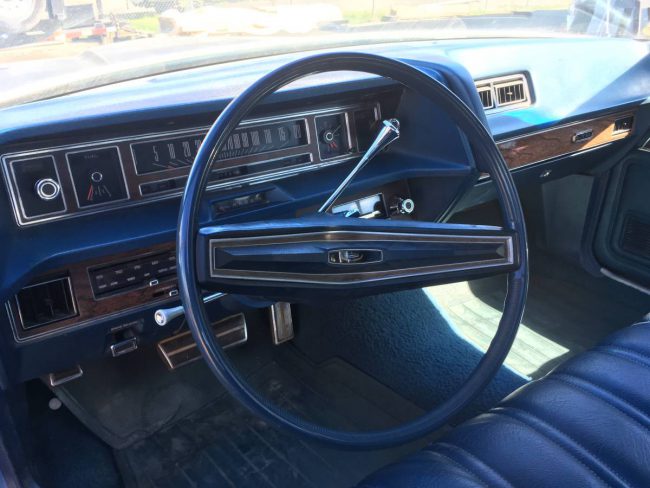
But at the opposite end of the spectrum was the darling of the suburban set, the Country Squire.
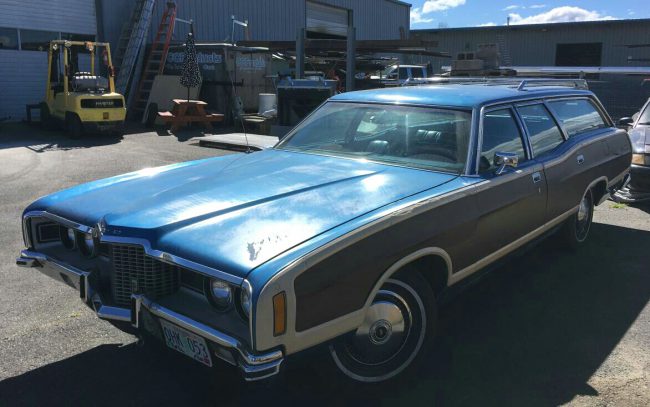
Known by its trademark wood vinyl side moldings and trim, the two-seat model weighed 4,306 pounds and sold for $4,380. The three seat Country Squire sold for $4,496.
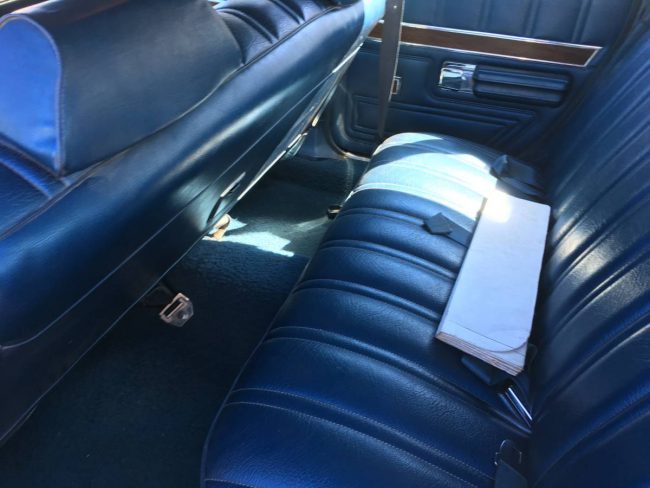
Production of both the two and three seat Country Squires amounted to 130,644 units. That’s a lot of Di-Noc woodgrain! The Country Squires were also the most expensive of the full sized Fords, with the top trim LTD Brougham coupe retailing for $3,945 and the hardtop sedan for $4,140.

Available engines included 351, 400, and 429 CID V8s. And while a lot of us have a lot of affection for these classical land yachts, most of these Country Squires were traded for a new one by the mid-’70s, had the bark beaten off of them by the third, fourth and fifth owners, and were crushed by the early ’80s, if not earlier. They were also notorious rusters. So spotting any 1971-1972 Ford is a rarity in 2019, even at car shows. Naturally, I perked up when I saw this survivor in a CL ad last week, and had to write it up. The link is below, for any interested parties:
https://medford.craigslist.org/cto/d/medford-1971-country-squire/6847139177.html
No one can argue that new cars aren’t safer, last longer, and burn less carbonized dinosaurs, but darn it, these Nimitz-class Ford wagons had some style.
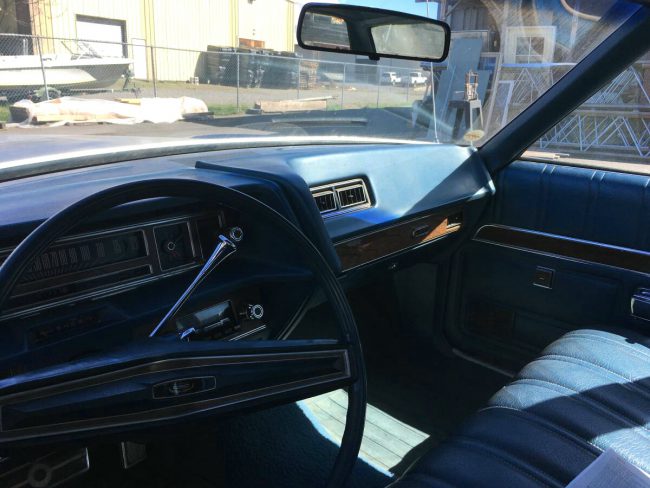







11 Comments
From the outside, it looks like there would be tons of free space under the long hood, Then the underhood picture shows that 429 filling up the space easily. I guess 7 liters will do that.
With only minimal bumper standards again, I am ready for loop decorative bumpers to come back and replace the giant grills of today that are mostly blocked off anyway. Thanks Tom
I always liked these Fords. While not a Country Squire, my father bought a new ’72 Ford Galaxie sedan with the 351, very handsome in copper with a white top and cloth upholstery. It was a great open road cruiser. The only problem he ever had with it was when the water pump failed at about 145,000 miles. Dad kept it until 1979, when he traded it on a new Chevy Caprice. That car was troublesome, so in 1980 he got another big Ford, and it too proved stone reliable.
Love the brochure pictures of children playing totally unrestrained in the huge cargo area. Today parents get arrested for not having their kids in $500 safety seats until about age 15.
I can’t make the picture bigger, but is there a small kid playing inside the compartment on the left? Can you imagine the outrage today, also brochure would immediately get flak for only showing white kids playing in the wagon.
Indeed there is a toddler playing in the driver side rear storage compartment.
I believe Ford was unique in the big wagon category with its side-opening rear seat layout, which allowed them to pip the competition by offering seating for up to 10 occupants compared to everyone else’s 9 in a 3×3 arrangement.
I had a 1976 Mercury Colony Park wagon with that seat and that 10 occupants claim is fantasy, I’ve never seen an ad boasting it, the 3rd row seat is for extremely thin small children, there is no way more than one grown adult could sit in that hole. There were only seat belts on each seat from what I recall so the best they could offer legally would be 8 passengers.
By comparison, my 3 row 1975 Estate Wagon does have seating for 8 real humans and space in the back for some luggage still, plus the 3rd row seat faces forward, its a much better set up
Our own experiences clearly differ, as I found myself sharing the rear seating area with 2 and 3 other kids being shuttled around to various activities during their heyday. I’m certain today’s plus-sized children would find it difficult to fit into the rear seating well, but back then we didn’t worry about how cramped the accommodations might seem.
No actually, we agree, the seat is for small children and that its cramped even for them.
Excellent styling on this year, but the entire front grill looked like a Chevy bowtie.
The cars of my youth, for sure. I’m not sorry to see that woodgrain trim go away – in its time I thought it was tacky and an annoying lookit-mee attempt to tie into the history of wooden wagons 30-years gone – but the general style, as well as the relative simplicity, are truly missed.
These were useful cars. Not as useful as a minivan; but as a compromise – much of the same style as flagship coupes, and identical below the beltline; but with plenty of interior space – they were a realistic compromise in a family-car choice. Today, it’s either SUVs, with expensive 4wd systems, and a premium charged for popularity – or else a blob-car with little style appeal or even differentiation.
FWIW, the woodgrain trim just didn’t hold up. Back in the early 1980s, living in Texas on a budget, I bought a well-thrashed 1973 Pinto Squire. The body was solid, even if the paint was oxidized; and the German four-cylinder was still incredibly healthy despite mistreatment.
But the vinyl wood applique and the aluminum border stripping had burned, discolored; had its plastic facing lift off, trap rainwater, and grow incredible mold. Pulling it off would have left a series of holes along the entire length of the car; and serious bodywork was more money than that $500 beater was worth.
Another great story Tom, well done. My first car was a 71 Ford station wagon. My dad bought it for me the day I got my license. It was its own area code. He said “here, learn how to drive with this…” LOL!